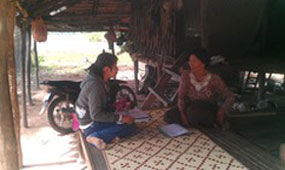 The best way to collect information is simply to ask questions. However, there are a number of ways this can be done to collect the information and this would depend on the objectives, timeline and budget of the project as well.
The best way to collect information is simply to ask questions. However, there are a number of ways this can be done to collect the information and this would depend on the objectives, timeline and budget of the project as well.
For an interviewer (the person who asks the questions) you will be involved in most of these.
1 TELEPHONE INTERVIEWS
Where it is possible to reach the target sample by telephone and the questionnaire is relatively simple, interviews can be administered over the telephone.
2 DOOR TO DOOR
This involves interviewing individuals within a household and selection of household is done using a random walk within a pre-determined area. The interviewer is supplied with a starting point and route instructions. A limited number of interviews are conducted at each starting point. This grouping of interviews is called a cluster.
3 FACE TO FACE
This simply means in-person and most of the interviewing you will do will be face-to-face.
4 MALL WORK
In this case you will work within a shopping centre (mall) and will recruit respondents on an intercept basis. A screening questionnaire will be applied to ensure the people you approach meet the recruitment criteria.
5 BUSINESS INTERVIEWS
These can be either face-to-face or telephone interviews and involve identifying an individual within a business who can authoritatively answer our questions on behalf of the business.
6 RECRUITMENT
Often, face-to-face or telephone interviewing is used to recruit suitable respondents for qualitative research. In this case you will use a questionnaire to collect basic demographic information from which you can tell whether this will be a suitable candidate for the main survey. If so, you will then invite the person to participate and provide details of when and where.
For more detail about this article, please contact MRTS.
